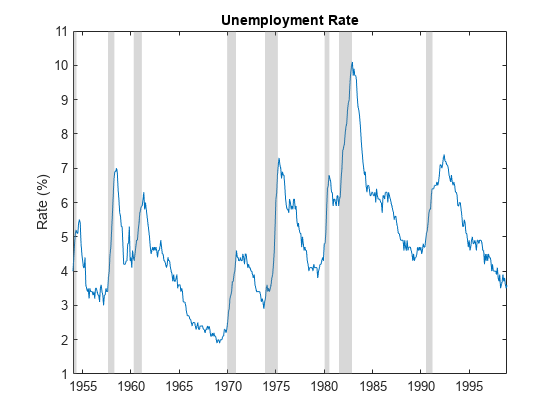recessionplot
Overlay recession bands on time series plot
Description
recessionplot(
uses additional
options specified by one or more name-value arguments. For example, Name,Value)recessionplot('recessions',recessionPeriods)
specifies overlaying shaded bands for the recession periods in
recessionPeriods.
Examples
Name-Value Arguments
Output Arguments
Tips
recessionplotrequiresdatetimevalues or serial date numbers on the horizontal axis of a time series plot. To convert other date information to this format before plotting, usedatetimeordatenum.To achieve satisfactory displays on certain monitors and projectors, change the color and opacity of the recession bands by setting the
FaceColorandFaceAlphaproperties of the output handles.
References
[1] National Bureau of Economic Research (NBER), Business
Cycle Expansions and Contractions, https://www.nber.org/research/data/us-business-cycle-expansions-and-contractions.

